#christina koch
Text
does it ever drive you crazy

just how fast the night changes
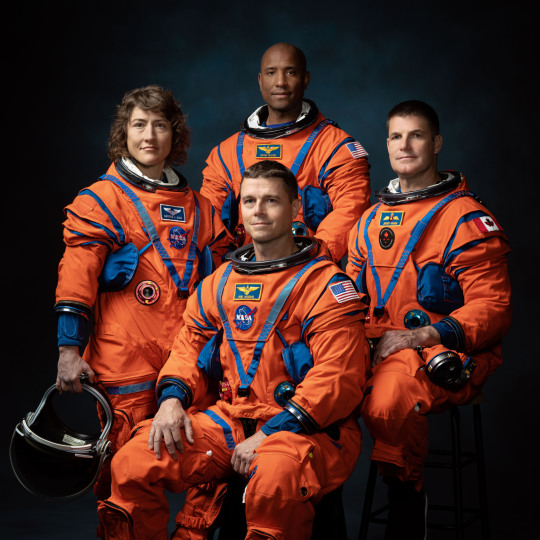
#nasa#space#science#astronomy#moon mission#moon#lunar mission#space exploration#apollo#apollo program#artemis#artemis 2#apollo 8#artemis II#jim lovell#bill anders#frank borman#christina koch#reid wiseman#victor glover#jeremy hansen
604 notes
·
View notes
Text
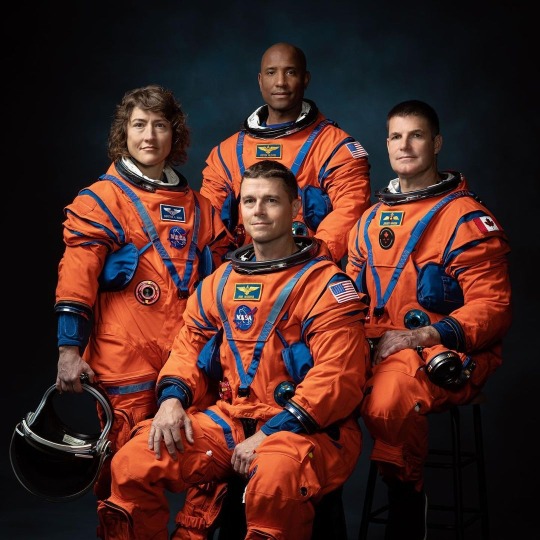




Meet the crew of NASA’s Artemis II mission, the next astronauts to fly around the moon:
Christina Koch visited the International Space Station in 2019, where she took part in the first all-woman spacewalk. She began her career as an electrical engineer at Goddard Space Center.
Jeremy Hansen was a fighter pilot before joining the Canadian Space Agency (CSA), and currently works with NASA on astronaut training and mission operations. This will be Hansen’s first mission in space.
Victor Glover is part of our 2013 class of NASA Astronauts and was the pilot for NASA’s SpaceX Crew-1 mission. He’s logged 3,000 flight hours in more than 40 different aircraft, and will pilot Orion around the Moon.
Reid Wiseman lived and worked aboard the ISS as a flight engineer in 2014. He also commanded the undersea research mission NEEMO21, and most recently served as Chief of the NASA Astronauts.
#congrats and best of luck to our crew 💙💙💙#NASA#artemis ii#astronauts#christina koch#jeremy hansen#victor glover#reid wiseman
291 notes
·
View notes
Text
youtube
Lots of cool moments with the crew in this video. They seem very easy-going and friendly. The fact that they're doing EVA and docking tests could imply that this crew might get to fly on future Artemis missions!
Especially liked the EVA training in the neutral buoyancy lab. The underwater audio is so relaxing. It must be very comfy for those scuba divers down there.
#artemis 2#artemis program#nasa#space#spaceflight#Reid Wiseman#Victor Glover#Christina Koch#Jeremy Hansen#Sunita Williams#Youtube
1 note
·
View note
Text
Screw it, Artemis II crew bracket. Based on what? Dunno. Pick your favourite.

#artemis program#nasa artemis#space#space exploration#artemis ii#nasa#artemis#Christina koch#Jeremy Hansen#Victor Glover#Reid Wiseman#space travel
1 note
·
View note
Text

Artemis II crew in front of the spacecraft that will take them on a trip around the moon
#orion#spacecraft#artemis#artemis II#Reid Wiseman#Victor Glover#Christina Hammock Koch#Jeremy Hansen
144 notes
·
View notes
Text
who: @christinaxwagner
where: bathroom at oasis

In the graffitied mirror, Cherry reapplied her makeup in what little reflection she could see. Things were a little blurry, about two more drinks before she completely started seeing double. As her blonde companion approached the counter where she stood, the epitome of hype girl you meet in the club bathroom energy over took her. "God, you look fucking gorgeous, you know that? Like, seriously - drop dead goregous!"
2 notes
·
View notes
Text
Monstrous Starring Christina Ricci Releases On Digital 11th July
Screen One Favourite Christina Ricci stars in Monstrous, unleashing on Digital 11th July. Watch the trailer here
#Monstrous #ChristinaRicci #ColleenCamp #SantinoBernard #ChrisSivertson @Koch_FilmsUK @CloutComCoUk
MONSTROUS, a unique supernatural thriller, starring Christina Ricci and directed by Chris Sivertson (I Know Who Killed Me, All Cheerleaders Die), will be unleashed in the UK on Monday 11th July, courtesy of Koch Films. It will be available to download via Sky Store, Virgin Movies, Apple TV / iTunes and Amazon, as well as Google Play and Xbox.
Pre-order now:…

View On WordPress
#Chris Sivertson#Christina Ricci#Colleen Camp#digital#Don Baldaramos#horror#Koch Films#Monstrous#Nick Vallelonga#Santini Barnard
6 notes
·
View notes
Text
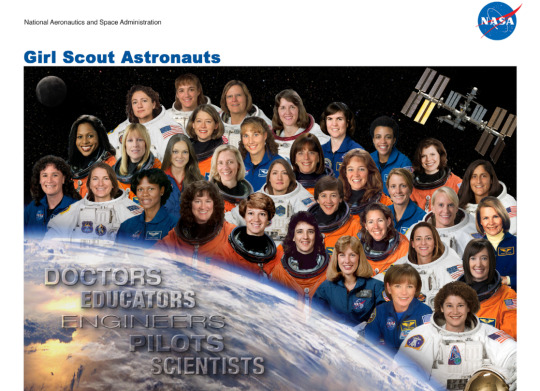
It’s Girl Scout Day! March 12, 2024, is the 112th birthday of Girl Scouts in the United States, and to celebrate, we’re sharing a lithograph of the Girl Scout alumnae who became NASA astronauts.
Girl Scouts learn to work together, build community, embrace adventurousness and curiosity, and develop leadership skills—all of which come in handy as an astronaut. For example, former Scouts Christina Koch and Jessica Meir worked together to make history on Oct. 18, 2019, when they performed the first all-woman spacewalk.
Pam Melroy is one of only two women to command a space shuttle and became NASA’s deputy administrator on June 21, 2021.
Nicole Mann was the first Indigenous woman from NASA to go to space when she launched to the International Space Station on Oct. 5, 2022. Currently, Loral O’Hara is aboard the space station, conducting science experiments and research.
Participating in thoughtful activities in leadership and STEM in Girl Scouts has empowered and inspired generations of girls to explore space, and we can’t wait to meet the future generations who will venture to the Moon and beyond.
Make sure to follow us on Tumblr for your regular dose of space!
#NASA#space#space exploration#Girl Scouts#adventure#explore#inspiration#inspirational women#Womens History Month#WHM#science#STEM#women in STEM#women in science#International Space Station#ISS#astronaut#tech#technology
2K notes
·
View notes
Text
Horror Movie Review: The Menu (2022)
A young couple who visits an exclusive destination restaurant on a remote island where the acclaimed chef has prepared a lavish tasting menu, along with some shocking surprises.
The Menu is a 2022 American black comedy horror film directed by Mark Mylod, written by Seth Reiss and Will Tracy, based on an original story created by Tracy.
Foodie Tyler Ledford and his date, Margot Mills, travel by boat to Hawthorn. Hawthorn is an exclusive restaurant owned and operated by celebrity chef Julian Slowik, located on a private island. The other guests attending the dinner are…

View On WordPress
#Adam Aalderks#Adam McKay#Aimee Carrero#anya taylor-joy#Arturo Castro#Betsy Koch#Black Comedy Horror#Chef#Christina Brucato#cooking#Hong Chau#janet mcteer#John Leguizamo#Judith Light#Mark Mylod#Mark St. Cyr#Matthew Cornwell#Nicholas Hoult#Paul Adelstein#Peter Grosz#Ralph Fiennes#Rebecca Koon#Reed Birney#Rob Yang#Seth Reiss#The Menu#Will Ferrell.#Will Tracy
1 note
·
View note
Text
Film Interview - Chris Sivertson (Monstrous)
Film Interview - Chris Sivertson (Monstrous)
@CloutComCoUk #Monstrous #ChristinaRicci #ChrisSiverton
Back in March Chris Siverton‘s Monstrous made it’s UK Premiere at Arrow Video FrightFest at the Glasgow Film Festival. Next month Koch Media will release the film digitally in the UK and Ireland, we recently had a chat with Chris. In our chat he talks about the joy of working with Christina Ricci, monstrous inspirations and why horror films are our modern day fairy tales.
What drew you to take…

View On WordPress
0 notes
Text

Artemis ‖ Mission Astronauts l NASA
The first human mission to the Moon in more than 50 years – including the first woman and Black man ever assigned to a lunar mission
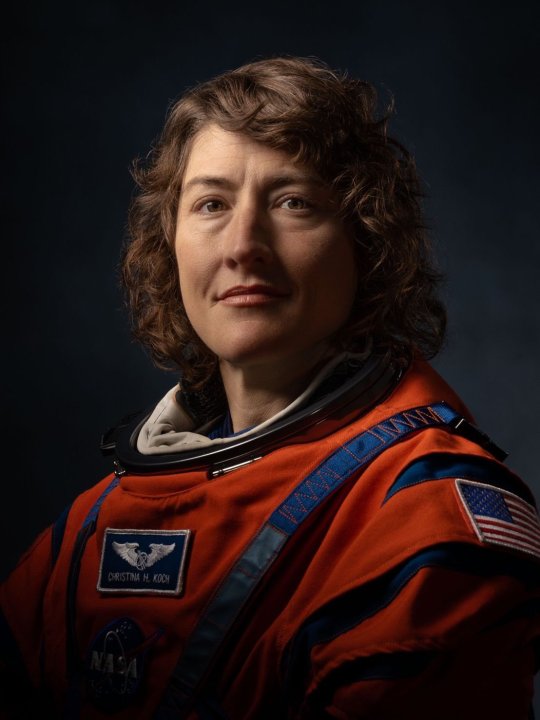
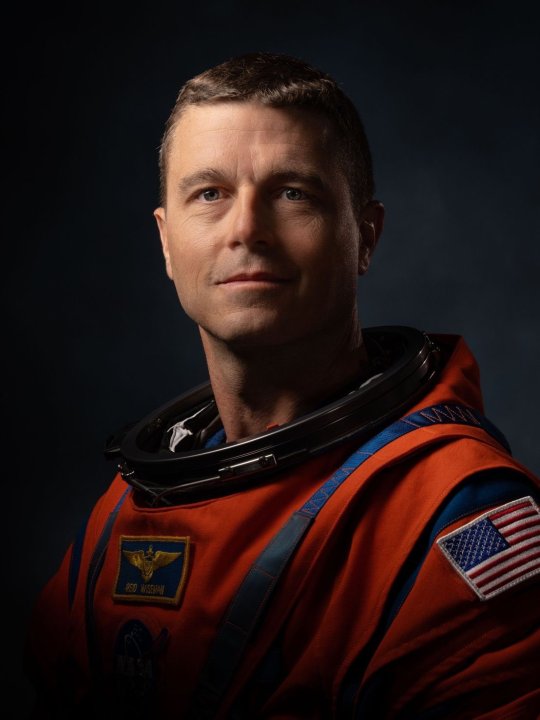
Christina Hammock Koch l Reid Wiseman


Victor Glover l Jeremy Hansen (Canadian)
#artemis 2#artemis 2 mission#nasa#astronaut#space#universe#crewed mission#orion spacecraft#moon#stars#galaxy#solar system#planets#astrophotography#astronomy
473 notes
·
View notes
Text
Christina Koch

Christina Koch was born in 1979 in Grand Rapids, Michigan. In 2013, Koch was selected by NASA to become an astronaut. She was a flight engineer on International Space Station Expeditions 59, 60, and 61. During her ISS expeditions, Koch helped to test free-flying robotic assistants, and to lengthen the lifespan of the ISS' Alpha Magnetic Spectrometer. With 328 days in space, she set a new record for the longest single spaceflight by a woman. In 2023, Koch was selected for the Artemis II mission to fly around the moon.
Image source: NASA
18 notes
·
View notes
Text
Jeremy Hansen is heading to the moon.
The 47-year old Canadian astronaut was announced today as one of four astronauts — along with Christina Koch, Victor Glover and Reid Wiseman — who will be part of NASA's Artemis II mission.
"For me, it's a bit unreal still," Hansen told CBC's Paul Hunter.
[...]
Artemis I was the first test of NASA's new mega-rocket — the Space Launch System (SLS) and its new crew capsule, Orion. Uncrewed, it launched in November on a 25-day mission around the moon that was deemed a success.
Artemis II is the second step in NASA's mission to return astronauts to the surface of the moon.
Full article
Tagging: @politicsofcanada
#cdnpoli#canadian politics#canadian news#canadian#canada#uspoli#NASA#jeremy hansen#space#moon#astronauts#artemis I#artemis II#space exploration
80 notes
·
View notes
Text
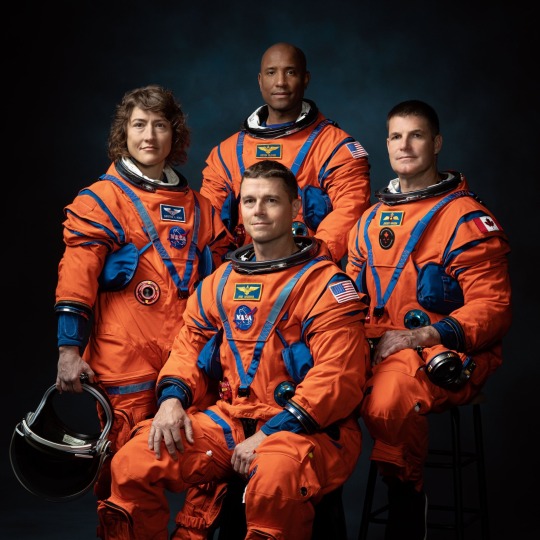
THEY’RE GOING TO THE MOON! Introducing the Artemis II astronauts:
Reid Wiseman, Commander
Victor Glover, Pilot
Christina Koch, Mission specialist
Jeremy Hansen, Mission specialist
Four astronauts will venture around the Moon on Artemis II, the first crewed mission on NASA's path to establishing a long-term presence at the Moon for science and exploration through Artemis.
👉🏿 https://nasa.gov/artemis-ii
60 notes
·
View notes
Text
Those who have travelled to the moon:
Neil Armstrong
Edwin Aldrin Jr.
Michael Collins
Pete Conrad
Dick Gordon
Alan Bean
Jim Lovell
John Swigert
Fred Haise
Alan Shepherd
Stuart Roosa
Edgar Mitchell
Dave Scott
Al Worden
Jim Irwin
John Young
Ken Mattingly
Charlie Duke
Gene Cernan
Ron Evans
Jack Schmitt
Soon, there will be more names on this list: Reid Wiseman, Victor Glover, Christina Hammock Koch, Jeremy Hansen
#apollo program#apollo xi#apollo xii#apollo xiii#apollo xiv#apollo xv#apollo xvi#apollo xvii#artemis program#moon landing day#july 20 1969#moon landing#we're going back#artemis ii
47 notes
·
View notes
Text

Key test drive of Orion on NASA's Artemis II to aid future missions
Astronauts will test drive NASA's Orion spacecraft for the first time during the agency's Artemis II test flight next year. While many of the spacecraft's maneuvers like big propulsive burns are automated, a key test called the proximity operations demonstration will evaluate the manual handling qualities of Orion.
During the approximately 70-minute demonstration set to begin about three hours into the mission, the crew will command Orion through a series of moves using the detached upper stage of the SLS (Space Launch System) rocket as a mark. The in-space propulsion stage, called the ICPS (interim cryogenic propulsion stage), includes an approximately two-foot target that will be used to evaluate how Orion flies with astronauts at the controls.
"There are always differences between a ground simulation and what an actual spacecraft will fly like in space," said Brian Anderson, Orion rendezvous, proximity operations, and docking manager within the Orion Program at NASA's Johnson Space Center in Houston. "The demonstration is a flight test objective that helps us reduce risk for future missions that involve rendezvous and docking with other spacecraft."
After NASA's Reid Wiseman, Victor Glover, and Christina Koch, and CSA (Canadian Space Agency) astronaut Jeremy Hansen are safely in space, the moon rocket's upper stage will fire twice to put Orion on a high Earth orbit trajectory. Then, the spacecraft will automatically separate from the rocket stage, firing several separation bolts before springs push Orion a safe distance away.
As the spacecraft and its crew move away, Orion will perform an automated backflip to turn around and face the stage. At approximately 300 feet away, Orion will stop its relative motion. The crew will take control and use the translational and rotational hand controllers and display system to make very small movements to ensure Orion is responding as expected.
Next, the crew will very slowly pilot Orion to within approximately 30 feet of the stage. A two-foot auxiliary target mounted inside the top of the stage, similar to the docking target used by spacecraft visiting the International Space Station, will guide their aim.
"The crew will view the target by using a docking camera mounted inside the docking hatch window on the top of the crew module to see how well aligned they are with the docking target mounted to the ICPS," Anderson said. "It's a good stand in for what crews will see when they dock with Starship on Artemis III and to the Gateway on future missions."
About 30 feet from the stage, Orion will stop and the crew will checkout the spacecraft's fine handling qualities to evaluate how it performs in close proximity to another spacecraft. Small maneuvers performed very close to the ICPS will be done using the reaction control system thrusters on Orion's European Service Module.
Orion will then back away and allow the stage to turn to protect its thermal properties. The crew will follow the stage, initiate a second round of manual maneuvers using another target mounted on the side of the stage, approach within approximately 30 feet, perform another fine handling quality check out, then back away.
At the end of the demonstration, Orion will perform an automated departure burn to move away from the ICPS before the stage then fires to re-enter Earth's atmosphere over a remote location in the Pacific Ocean. During Orion's departure burn, engineers will use the spacecraft's docking camera to gather precise positioning measurements, which will help inform navigation during rendezvous activities on future missions in the lunar environment, where there is no GPS system.
Because the Artemis II Orion is not docking with another spacecraft, it is not equipped with a docking module containing lights and therefore is reliant on the ICPS to be lit enough by the sun to allow the crew to see the targets.
"As with many of our tests, it's possible the proximity operations demonstration won't go exactly as expected," said Anderson. "Even if we don't accomplish every part of the demonstration, we'll continue on with the test flight as planned to accomplish our primary objectives, including evaluating Orion's systems with crew aboard in the deep space environment and keeping the crew safe during the mission."
The approximately 10-day Artemis II flight will test NASA's foundational human deep space exploration capabilities, the SLS rocket and Orion spacecraft, for the first time with astronauts and will pave the way for lunar surface missions, including landing the first woman, first person of color, and first international partner astronaut on the moon.
10 notes
·
View notes